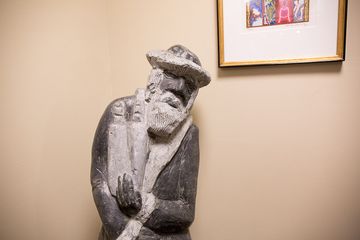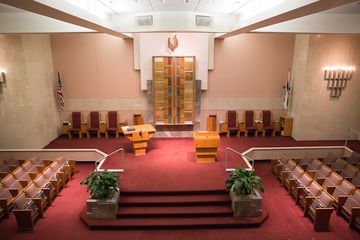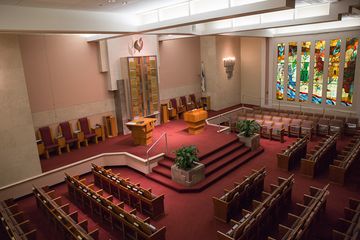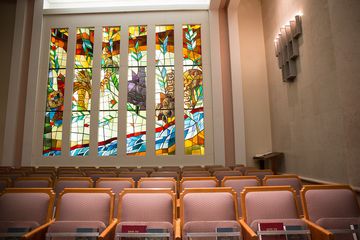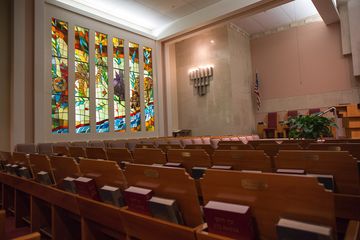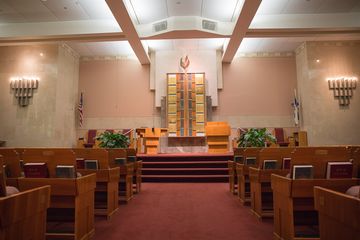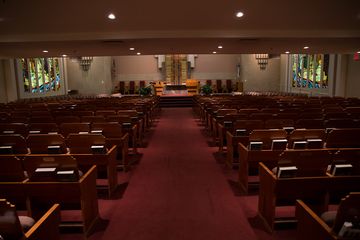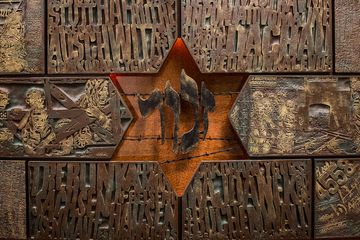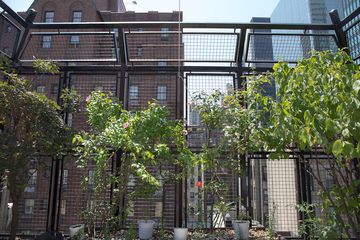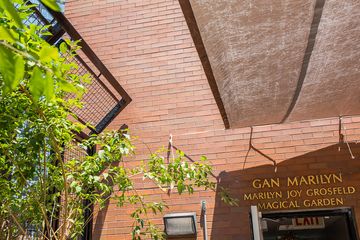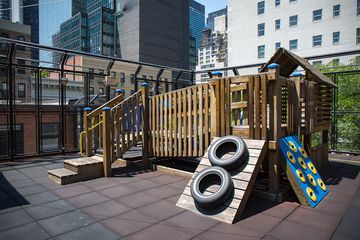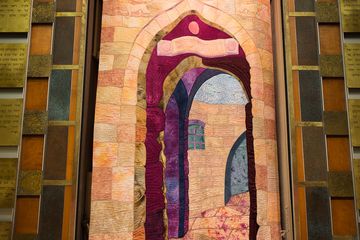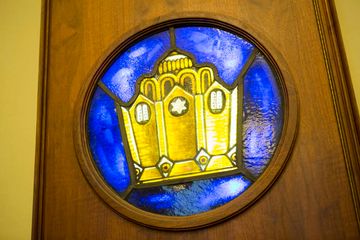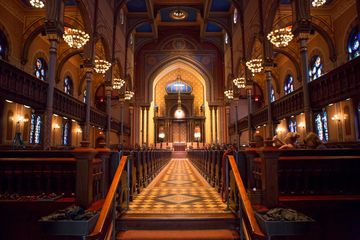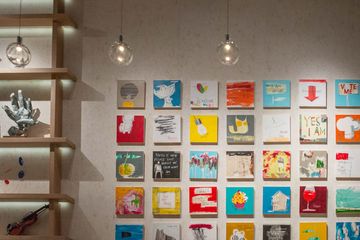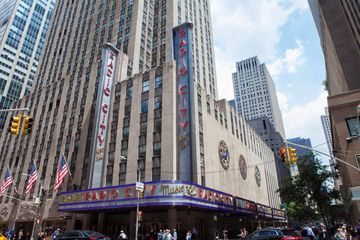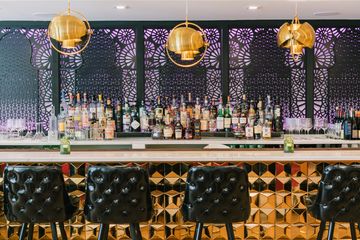
The history of the Sutton Place Synagogue can be traced back to 1901. The Congregation Beth Hamidrash Hachhagadol Talmud Torah met in a loft above a blacksmith's on East 50th Street until 1906, when they upgraded to a space at the current address. The building was purchased from Congregation Orach Chayim, who had in turn bought it from a Methodist mission chapel. In 1975, the congregation moved into their current synagogue building and it was renamed "Sutton Place Synagogue -The Jewish Center for the United Nations."
From as early as 1965, when UN Secretary General U-Thant recognized the synagogue as the third religious center serving the United Nations, Sutton Place has prided itself on being an active member of the international, politically minded community in which it is located. From 1981 to 1994, the synagogue welcomed speakers including Elie Wiesel, Henry Kissinger, Isaac Bashevis Singer and a myriad of others as part of their "Jewish Town Hall Lecture Series." These lectures were often so well attended that the whole block would be closed off to traffic, and the talks broadcast to spectators standing outside the building.
The Jewish Town Hall lectures were largely the brainchild of Rabbi David Kahane, the congregation's leader from 1949 until 1993, when he became Rabbi Emeritus. Rabbi Kahane was also behind one of the synagogue's most distinctive traditions during this period: the High Holy Day Services for Singles. These services, according to their official history, were "the first of their kind in New York and in fact, in the United States." More importantly, as Harriet Janover, the former Executive Director and current Director of Programming and Member Services told us, the services resulted in "many marriages." And, though he himself was ordained in the Orthodox tradition, it was during Rabbi Kahane's time at Sutton Place Synagogue that the congregation joined the Conservative movement in the '50s.
Today, they have become increasingly family-oriented, dedicating a new religious school building in 2001 and becoming, in Harriet's words, "more of a relationship-type synagogue." Though, like many congregations, they have grown smaller in size, "we're becoming an intergenerational congregation," she told us. With the popularity of the nursery school and other education programs, "there are children here all day long." Following a push by the female members, the temple has become fully egalitarian in the past decade, the last Conservative synagogue in Manhattan to do so.
The building itself features an impressive, spacious sanctuary refurbished using Israeli craftsmen and materials. It features twinkling stained glass windows depicting Jewish imagery, including the Hebrew names of the Twelve Tribes of Israel and various stories from the Torah. Upstairs, there is a rooftop playground and the Marilyn Joy Grosfeld Magical Garden, with quiet perches from which to look down on the waterfall of Greenacre Park below.
